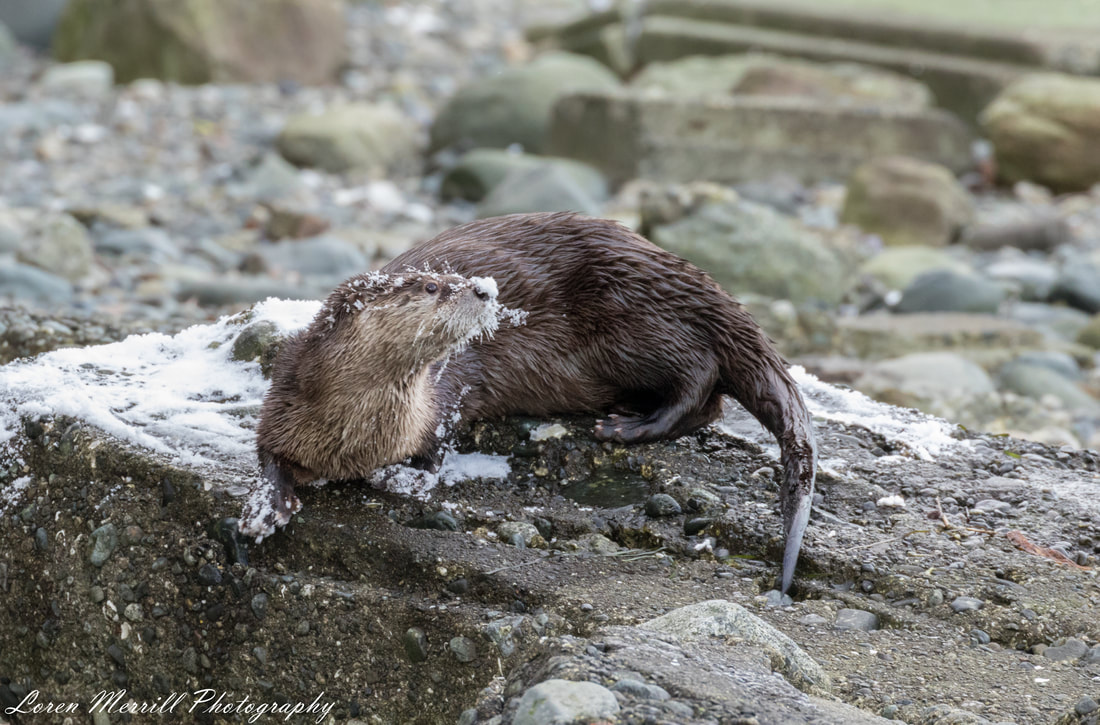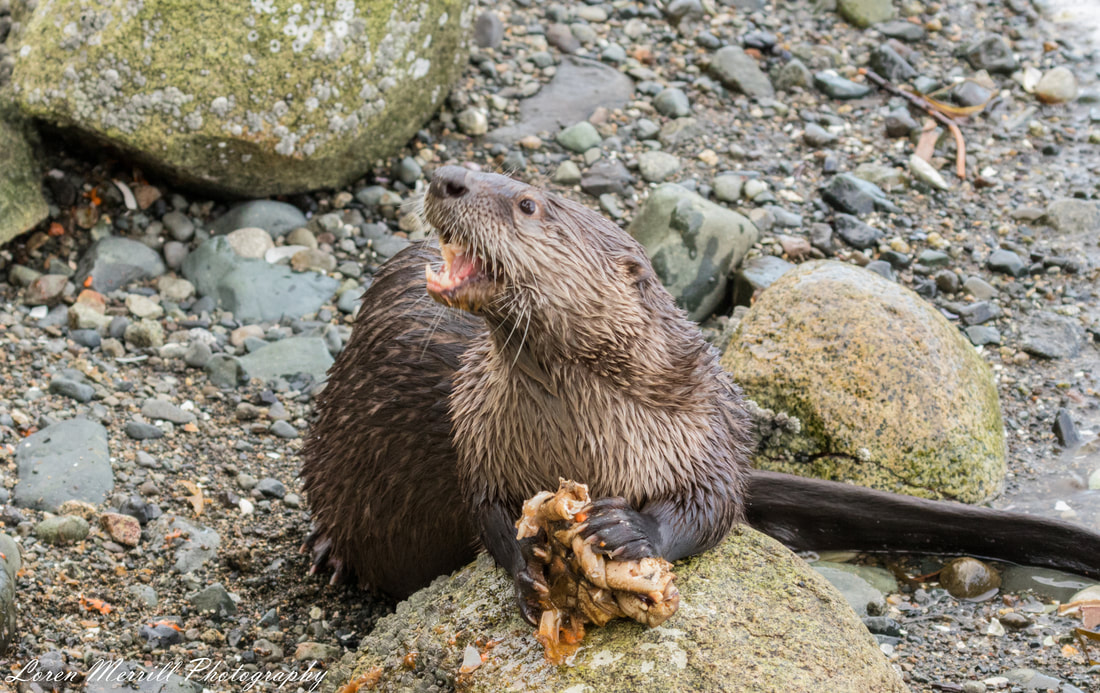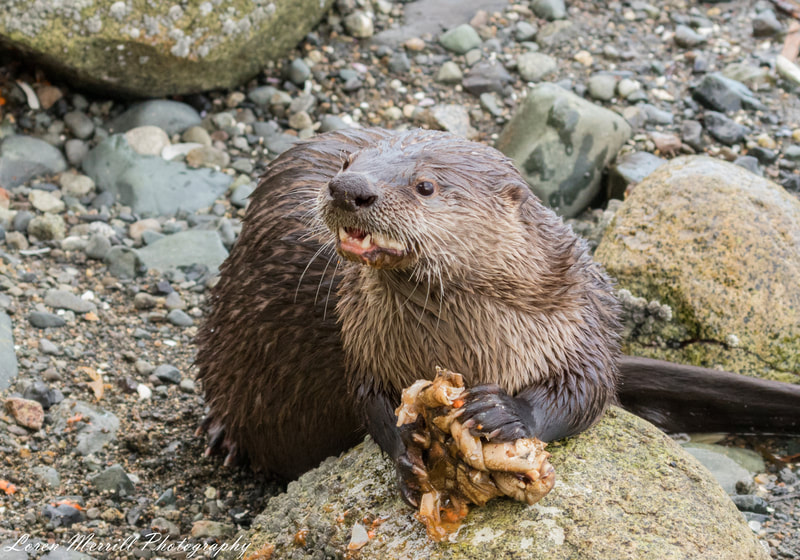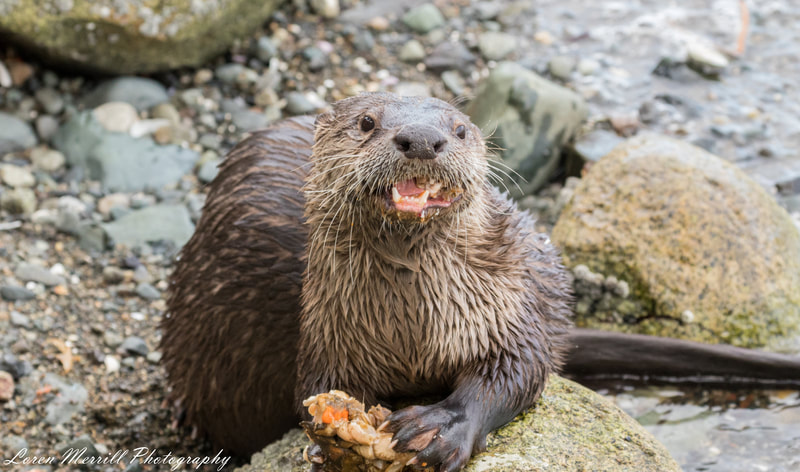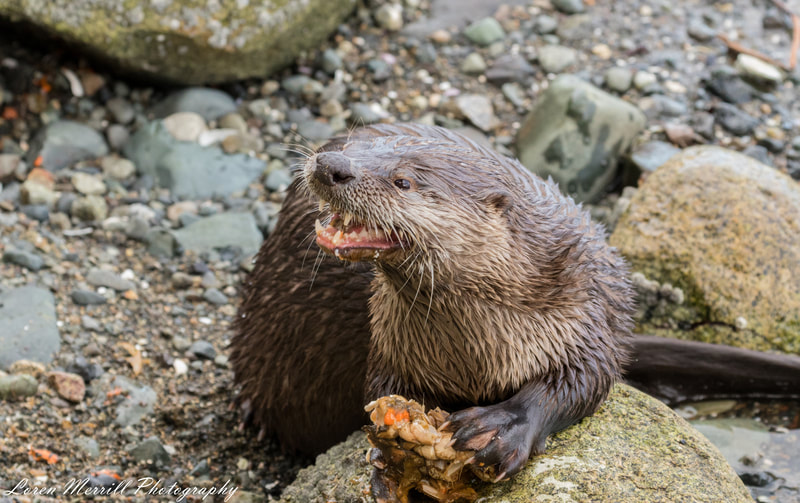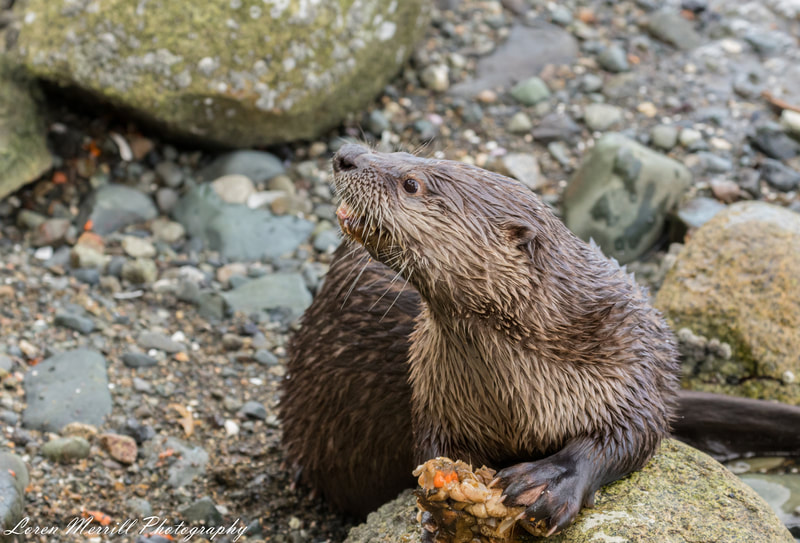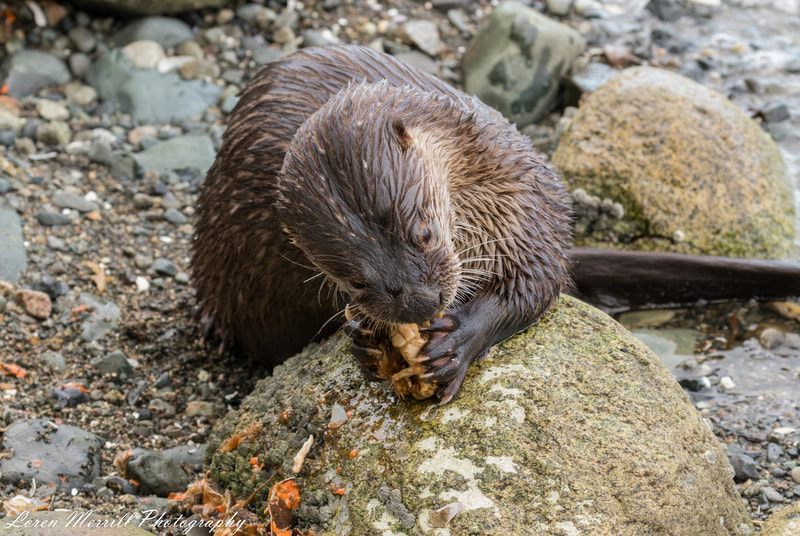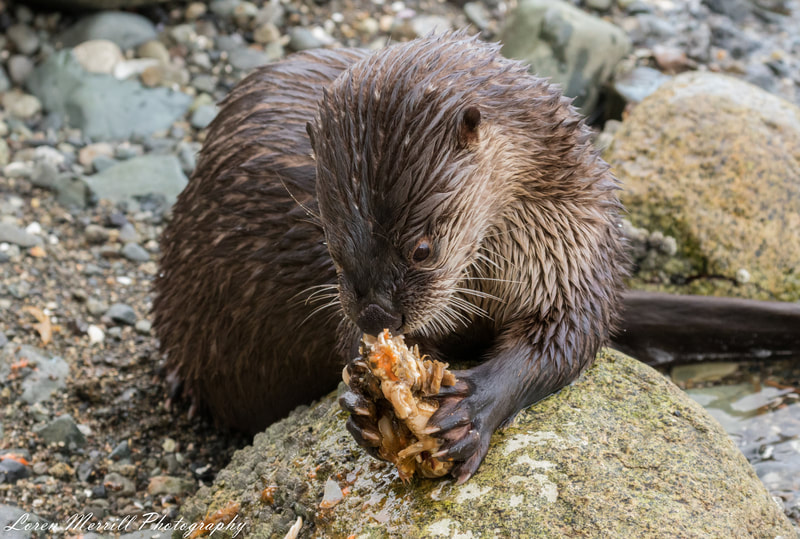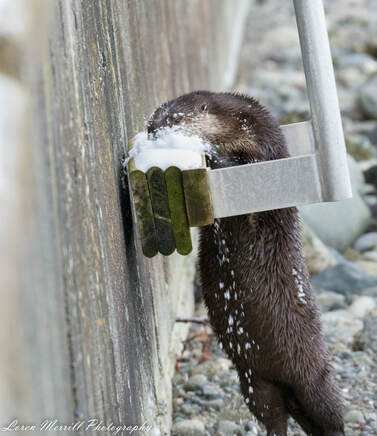|
One month in our Ladysmith home has revealed a few of the natural rhythms of the area. The tides exhibit remarkable variation, even over the course of a day. The water may recede a hundred meters from the seawall in the early morning, and barely reach 10 meters in the evening. Each day’s variation changes over the course of the week and month and is tied to the lunar cycle, as well as the earth’s position around the sun. While we don’t see too much of the sun, when it does emerge, it so dramatically changes the landscape you feel as though you have been transported to an entirely new location. In its absence, the area is cloaked in low clouds with wispy strands of fog clinging to the trees. When the sun shines, the soft, beveled edges to the world vanish, and everything is brought into sharp focus. Ladysmith possesses an ever-changing landscape that we feel very fortunate to be a part of. One of the constants here is the crow commute. Northwestern crows are abundant in the area, and they roost off to our west. Every morning before sunrise, the crows stream out from their nighttime sanctuary, flying over the harbor and cawing away at one another as they make their plans for the day. In the evening, they make the return journey, sometimes in one large, cloudlike flock, expanding and condensing as they travel. During the day, smaller flocks or individual birds can be seen flying overhead or bouncing around the coastline. Crows are supreme generalists, and will take advantage of just about any food source. Here on the coast, that includes leftover seafood from another constant in our seaside community: the river otters. Early in our stay, I estimated there to be about 3-4 otters near our home. This initial appraisal proved to be an underestimate, as I saw 6 of them together at one point last week. I’ve seen the otters swim, play in the snow, and chase ducks, but by far the most common activity they engage in is eating. Otters are opportunistic foragers and will generally target the most accessible food source available. In Ladysmith Harbor, that is undoubtedly crab. Last week, I watched as three otters huddled together on the rocks near the stream mouth, and crunched their way through a large Dungeness crab. Not long thereafter, one of the otters broke away from the group and started heading my way. I tried to estimate where its trajectory would take it, and positioned myself at the edge of our seawall, crouching low so as to not spook the otter if it approached. Sure enough, the small otter (presumably an individual from last year’s litter) appeared around the corner of our seawall, and proceeded to crawl from the water onto the small rocky beach below me. I was perched only 10 feet away and began capturing the action on my camera. 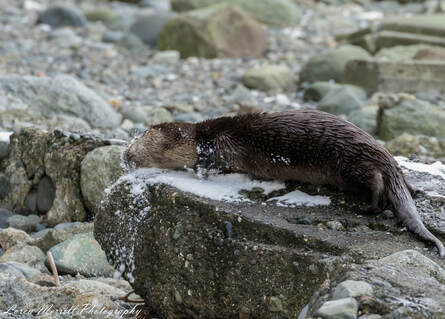 A river otter rolls its face and upper body around in a small patch of snow. Ladysmith, BC. A river otter rolls its face and upper body around in a small patch of snow. Ladysmith, BC. At first, the otter casually explored the rocky beach. With no particular intention, it nosed its way around the rocks, and wandered into and out of the water. But after a short bit of this meandering, the otter snuffled its way to the remains of a large crab and got to business. I’ve watched the otters here eat crab in all sorts of positions. They eat while they swim, employing an exaggerated open-mouthed chewing style. They eat standing on all fours along the shoreline like a cat or a dog might. They even eat lying on their bellies, pinning their crab to the ground while they munch away. But this little fellow propped its forelimbs and upper body up onto a large table of a rock, grabbed the crab with its front paws, and dined on the crab in style. For ten minutes the otter consumed the crab with gusto, crunching through the tough shell, and extracting the rich meat inside. Maybe the otter was unaware of my presence, or maybe it was simply too overcome with seafood joy to care, but the small otter never once appeared to be concerned that I was so close. After devouring the crab, and sniffing around to clean up the scattered bits and pieces, the otter headed away from me and down the beach. It found a few pockets of fresh water where it paused to quench its thirst, and then went about cleaning up from its meal. At first the otter rubbed its muzzle on a barnacled rock, trying to scratch off the crab residue. Then the otter discovered a patch of snow, and that’s when the cleansing really commenced. First the otter crawled onto the patch of snow, and began gently rolling its face in the white flakes. Apparently pleased with the face bath, the otter then began rolling its upper body in the snow. Now this particular swath of snow wasn’t that large, and it wasn’t long before the otter went off in search of a larger patch. The otter located another small snow mound on the lower rungs of a ladder at our neighbor’s home, and stood up on its hind limbs to gain access. The otter shoveled its snout through the mound, pushing much of the now off the ladder and onto the beach, and after a few moments of this, headed off again in search of a more substantial yield.
The otter wandered further down the beach, and disappeared into another neighbor’s snow-covered yard. And the last I saw of the otter that morning was as it performed a full-body slide through the snow and disappeared into the bushes. Next post: The Storm of Storms
0 Comments
Leave a Reply. |
About the author:Loren grew up in the wilds of Boston, Massachusetts, and honed his natural history skills in the urban backyard. He attended Cornell University for his undergraduate degree in Natural Resources, and received his PhD in Ecology from the University of California, Santa Barbara. He has traveled extensively, and in the past few years has developed an affliction for wildlife photography. Archives:
|
